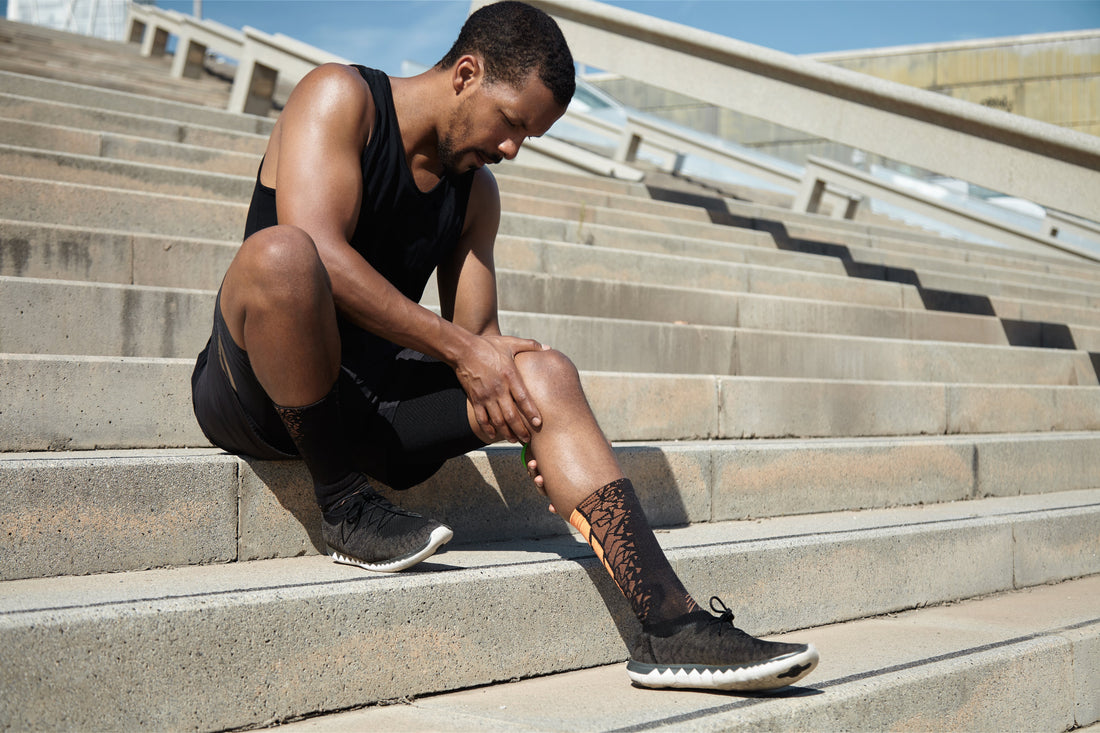
Best Ankle Braces for Running, Basketball, and Hiking
Share
Ankle injuries can sideline athletes and active individuals for weeks or even months. Whether it’s a sprain from a misstep on a trail, a twist while landing a jump, or chronic ankle instability, wearing the best ankle brace can provide the essential support and protection you need to stay active while reducing the risk of re-injury.
This comprehensive guide covers the best ankle braces for running, basketball, and hiking, along with expert advice on injury recovery, selecting the right type of brace, and preventing long-term issues. If you’re looking for orthopedic gear trusted by athletes, explore the wide selection at HealthSportSupply.com — a go-to source for ankle braces and supports.
Why You Need an Ankle Brace
The ankle joint is one of the most complex and heavily used joints in the body. It bears your entire body weight, absorbs shock during movement, and provides balance and control. This makes it highly vulnerable to:
- Ankle sprains
- Tendonitis
- Ligament injuries
- Chronic ankle pain
- Post-operative instability
- Arthritis-related degeneration
Common Causes of Ankle Injuries:
- Sudden lateral movement (e.g., in basketball or tennis)
- Overuse in running and high-impact training
- Slipping or stepping on uneven terrain while hiking
- Weakness due to previous sprains or lack of rehabilitation
Ankle sprains are one of the most common sports injuries, and once you've sprained an ankle, you're more prone to recurring sprains. An ankle brace helps stabilize your ankle, provide compression, and improve ankle protection during activities and recovery.
Understanding the Types of Ankle Braces
When choosing a brace, understanding the differences between types helps you match your activity, injury level, and amount of support needed.
1. Lace-Up Ankle Braces
- Offer customizable compression and fit
- Suitable for moderate instability or ongoing sports use
- Allow some range of motion, ideal for basketball and running
2. Rigid or Semi-Rigid Braces
- Include plastic or metal stays for maximum support
- Restrict lateral ankle motion to prevent rolling
- Recommended for moderate to severe ankle sprains, post-op care, or significant instability
3. Compression Sleeves
- Lightweight, breathable, and low-profile
- Provide support without restricting movement
- Great for daily wear, minor swelling, or as part of injury prevention
4. Hybrid Braces
- Combine lace-up systems with rigid supports
- Provide both compression and lateral support
- Ideal for multi-sport athletes or those transitioning out of a walking boot
Top Features to Look for in a Sports Ankle Brace
A good ankle brace should deliver the right balance of support and protection, while staying comfortable during long use. Here’s what to consider:
Fit and Comfort
- Adjustable closures (lace, straps, velcro) allow a secure fit
- Padded linings and breathable mesh prevent discomfort
- Slim enough to wear with a sneaker or athletic shoe
Level of Support
- Mild: For general stability and injury prevention
- Moderate: For managing ankle instability, tendonitis, or prior injuries
- Maximum: For injury recovery, severe sprains, or post-surgery
Range of Motion
- Low-profile designs allow some flexibility for running or hiking
- Rigid braces restrict movement but protect the ligament
Durability and Material
- Neoprene and elastic are breathable and flexible
- Reinforced hinges or side stays improve ankle stability
- Easy to wash and quick-dry materials enhance hygiene
Best Ankle Braces for Running
Running places repeated stress on the lower legs and ankles, particularly on uneven surfaces or long distances.
Recommended Brace Features:
- Low-profile, flexible design
- Moisture-wicking and breathable
- Mild to moderate compression for swelling reduction
- Enough ankle support without limiting stride
Ideal for:
- Runners with a history of mild ankle sprains
- Preventing fatigue-related instability on long runs
- Managing tendonitis or early-stage arthritis
Example Scenario:
If you’re a trail runner with occasional ankle pain or previous sprains, a compression ankle brace or lace-up ankle brace will provide enough support and recovery without affecting your performance.
At Health Sport Supply, runners will find comfortable and effective braces designed to reduce the risk of further injury while maintaining speed and freedom of movement.
Best Ankle Braces for Basketball
Basketball demands sharp cuts, lateral shifts, quick pivots, and high-impact landings. These are classic triggers for ankle injuries.
Recommended Brace Features:
- Lace-up braces with figure-8 straps for a locked-in fit
- Rigid or semi-rigid panels for side-to-side stability
- High-ankle coverage for extra protection
Ideal for:
- Players returning from moderate to severe ankle sprains
- Athletes who experience ankle instability or rolling ankles
- Reducing the likelihood of recurring sprains
Real Use Case:
A high school point guard recovering from a grade II sprain could benefit from a rigid brace to prevent lateral movement, while a weekend league player might prefer a lace-up brace with more comfort for practices and games.
Explore braces and supports built specifically for high-intensity court play at HealthSportSupply.com.
Best Ankle Braces for Hiking
Hiking puts pressure on the ankle joint, especially when navigating uneven terrain, carrying a pack, or trekking long distances.
Recommended Brace Features:
- Mid-weight brace that fits comfortably inside a hiking boot
- Reinforced padding around the ankle
- Flexible enough for climbing or descending
Ideal for:
- Hikers prone to rolling ankles on uneven paths
- Preventing overuse injuries like tendonitis
- Long-distance treks where fatigue increases injury risk
Real Use Case:
If you're backpacking across rocky trails for several days, you need a brace that is made for durability and increased stability, not a flimsy sleeve.
Choose hybrid or lace-up ankle braces with moisture-wicking material and reinforced lateral support from HealthSportSupply.com to maintain comfort and protection all day.
Comparing Brace Types by Condition
| Condition / Purpose | Best Brace Type |
|---|---|
| Mild ankle sprain | Compression sleeve |
| Moderate sprain or instability | Lace-up ankle brace |
| Severe injury / post-op | Rigid brace / walking boot |
| Hiking support | Hybrid or mid-flex lace-up brace |
| Basketball performance | Lace-up brace with figure-8 support |
| Running support | Low-profile compression brace |
| Arthritis or tendonitis | Soft brace with mild compression |
Choosing the Right Brace for Your Lifestyle
Every individual’s brace needs are different. Here's how to choose the best ankle brace for your lifestyle:
Consider Your:
- Daily activity level (active vs. sedentary)
- Sport or exercise routine
- Injury history
- Footwear type (do you wear tight shoes or boots?)
- Climate (need breathable materials?)
Expert Tip:
When in doubt, consult a physical therapist or orthopedic specialist. They can help assess your ankle movement, history of instability, and recommend specific braces and supports.
At Health Sport Supply, you’ll find expert-curated gear to support your recovery process, prevent ankle injury, and maintain long-term ankle health.
Injury Recovery and Prevention Tips
Wearing an ankle brace is just one piece of a complete recovery strategy.
Recovery Tips:
- Follow the R.I.C.E. protocol (Rest, Ice, Compression, Elevation)
- Perform rehab exercises to improve ankle stability and range of motion
- Wear a brace during high-risk activities until fully healed
- Stay aware of signs like swelling, ankle pain, or persistent instability
Prevention Best Practices:
- Warm up and stretch properly before activity
- Strengthen calf, ankle, and foot muscles
- Use appropriate footwear with strong ankle support
- Avoid overuse — take rest days between intense sessions
Ankle braces are most effective when combined with strengthening routines and proper movement mechanics.
FAQs About Ankle Braces
Do ankle braces weaken the ankle over time?
No — when used appropriately, ankle braces protect during activity without causing weakness. Pairing brace use with rehab and strengthening prevents dependence.
How tight should my ankle brace be?
A snug fit is essential for compression and stabilization, but it should not cut off circulation. You should be able to wiggle your toes comfortably.
Can I wear an ankle brace every day?
Yes, especially if you're recovering from injury or doing high-impact activity. However, for daily wear, choose a lightweight or compression sleeve design.
Should I use a brace or tape my ankle?
Braces are more consistent and reusable. Athletic tape can provide great support when applied by a professional but needs reapplication and skill.
How long should I wear a brace after a sprain?
For mild to moderate sprains, you may need support for 2–6 weeks. Severe injuries or post-surgical conditions may require extended use with gradually reduced wear time.
Final Thoughts: Find the Right Support at HealthSportSupply.com
Whether you're training for a marathon, heading into the mountains, or returning to the court, protecting your ankles is essential. The right brace will give you the support, comfort, and confidence to stay active without fear of reinjury.
From lace-up ankle braces to rigid supports and compression sleeves, https://healthsportsupply.com/ offers the best selection of ankle braces and supports for sports, recovery, and everyday protection. Explore their collection to find the brace that fits your activity, condition, and lifestyle.
